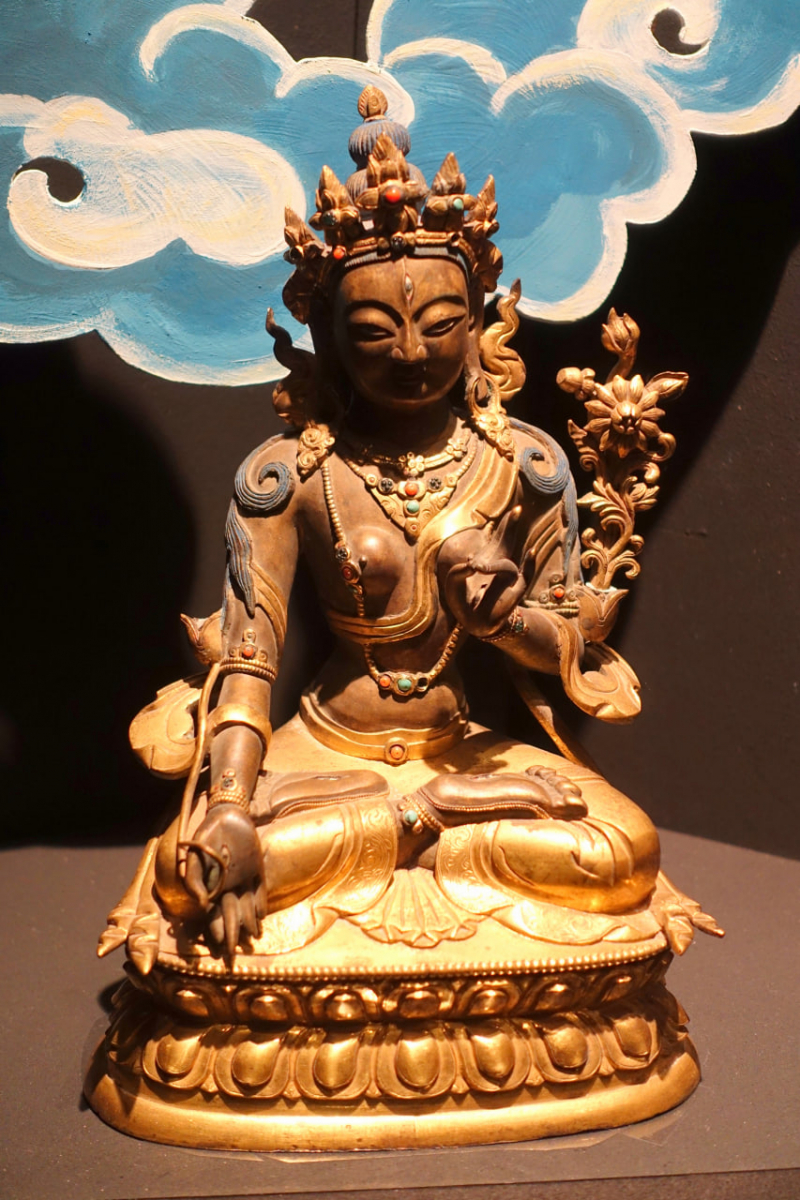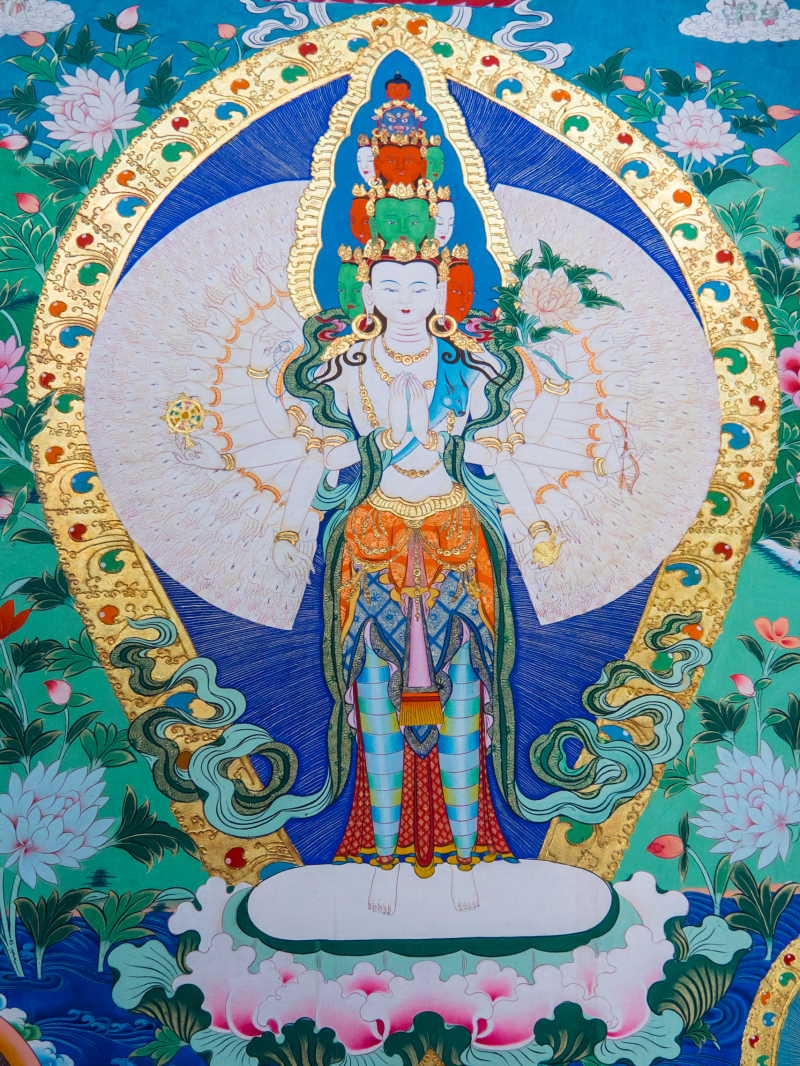Sitatara (White Tara)
White Tara, referred to as "Sitatara," holds a position of profound reverence and widespread recognition within Buddhism. She is portrayed as an embodiment of compassion, serenity, and wisdom and resonates with devotees seeking solace and guidance.
Her elegant form typically depicts a serene figure with a complexion as pure as driven snow. In a meditative pose, she extends her right hand in a gesture of generosity while her left-hand cradles a delicate lotus flower, signifying her perpetual readiness to guide and aid sentient beings.
White Tara's essence is intricately intertwined with compassion and curative energies. She is a beacon of hope, believed to offer safeguarding from physical ailments and spiritual afflictions. Invoking her name often invokes blessings of longevity, well-being, and vitality. The sacred mantra that resonates with White Tara's presence is "Om Tare Tuttare Ture Mama Ayur Punye Jnana Pushtim Kuru Svaha." Uttered for diverse purposes, this mantra seeks protection, healing, and the augmentation of positive attributes.
In select portrayals, White Tara aligns with the "Eight Aspects of Longevity," encompassing bodily and spiritual well-being facets. These aspects manifest through eight distinct Taras, each symbolic of a particular part of longevity. White Tara exemplifies nurturing guardianship and fortification, establishing her as a revered and influential figure in Buddhist devotion and practice.












